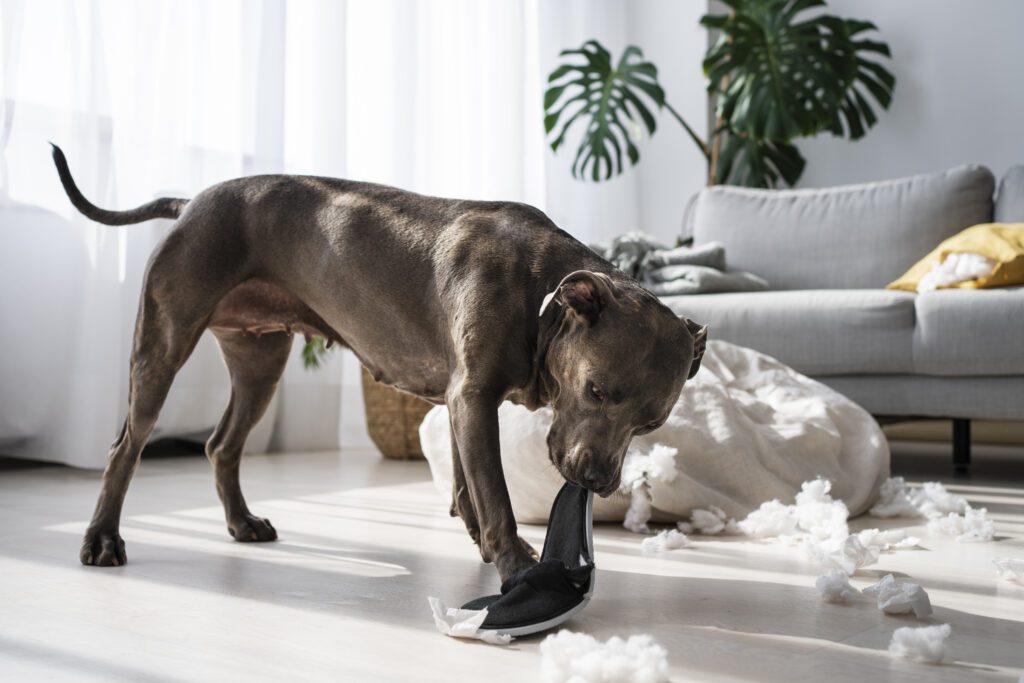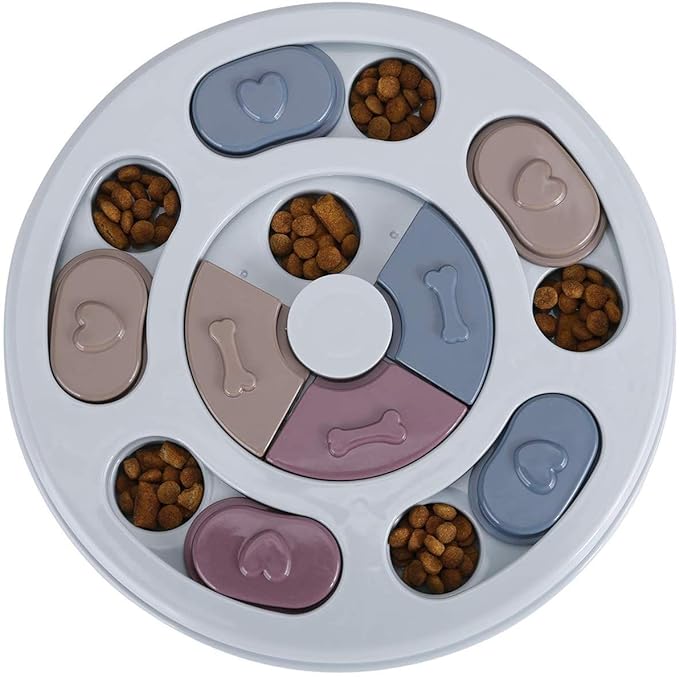Unveiling Effective Strategies to Prevent Excessive Dog Chewing

Introduction
Are you finding your beloved canine companion turning your treasured possessions into a chewed-up mess? The frustration of dealing with destructive dog chewing is a shared experience among pet owners.
In this comprehensive guide, we’ll delve into the depths of this behavior, unravel its causes, and equip you with a toolbox of effective strategies to address and prevent it.
Table of Contents
Understanding Destructive Dog Chewing
Before we embark on the journey of solutions, let’s take a moment to understand why dogs chew excessively. From teething puppies seeking relief to adult dogs manifesting anxiety through chewing, there are various motivations behind this behavior.
By comprehending the root cause, you’ll be better positioned to tailor your approach to meet your dog’s unique needs.
Destructive chewing can be attributed to boredom, separation anxiety, teething, or even medical issues. Identifying the specific trigger is crucial for crafting a targeted and effective intervention plan.
Signs of Destructive Chewing
Recognizing the signs of destructive chewing is a crucial first step. Distinguishing between normal chewing and behavior that leads to damaged belongings allows for timely intervention.
Common signs include shredded items, gnawed furniture corners, and evidence of chewing on personal items. By staying vigilant and observant, you can catch the behavior early and take appropriate action.
Strategies to Stop Destructive Chewing
1. Provide Appropriate Chew Toys

The foundation of curbing destructive chewing lies in offering suitable chew toys. Canines, particularly young pups, possess an inherent inclination for chewing.
Channeling this energy towards approved items prevents your belongings from becoming unintended casualties. Explore different textures and types to find what captivates your dog’s interest.
2. Training Techniques
Training is a powerful tool in modifying behavior. Employ positive reinforcement methods to teach your dog what is acceptable to chew and what isn’t.
Rewarding good behavior reinforces the desired actions, making your pup more likely to follow the established rules. Consistency and patience are paramount in the training process.
3. Environmental Management
Take a proactive approach to prevent destructive chewing by managing your home environment. Puppy-proofing and ensuring tempting items are out of reach reduce the likelihood of your dog making undesirable choices.
Create safe spaces with designated toys, providing your dog with alternatives to your prized possessions.
4. Regular Exercise

A tired dog is a well-behaved dog. Regular exercise is crucial for mental and physical stimulation, reducing the likelihood of boredom-induced chewing.
Structured walks, engaging playtime, and interactive activities cater to your dog’s energy levels, leaving them content and less prone to destructive behaviors.
5. Seek Professional Help
If your efforts don’t yield the desired results, don’t hesitate to seek professional assistance. A certified dog trainer or behaviorist can provide valuable insights into your dog’s behavior, offering personalized guidance tailored to your specific situation.
Professional intervention is especially beneficial when dealing with deep-seated issues such as separation anxiety.
Additional Strategies to Stop Destructive Chewing
6. Rotate and Refresh Toys

Dogs, like humans, can get bored with the same toys over time. Keep your pup engaged by rotating their toys regularly. Introduce new textures, shapes, and flavors to maintain their interest. This not only prevents boredom but also provides mental stimulation.
7. Use Bitter Sprays or Deterrents

Bitter-tasting sprays or deterrents are available that can be applied to items you want to protect. These sprays are harmless but taste unpleasant, discouraging your dog from chewing on treated objects.
However, it’s essential to test a small area first to ensure your dog reacts appropriately.
8. Supervise and Correct
Actively supervise your dog, especially during periods when destructive chewing is more likely, such as teething stages or when introducing a new environment.
Correct inappropriate chewing immediately with a firm but gentle tone. Consistent correction reinforces boundaries.
9. Address Teething Properly
Puppies go through teething, which can lead to an increase in chewing behavior. Provide appropriate teething toys specifically designed to soothe sore gums. Frozen washcloths or specialized teething rings can offer relief during this phase.
10. Establish a Routine
Dogs thrive on routine. Create a steadfast daily routine encompassing feeding, strolls, play sessions, and training exercises for your furry companion.
Predictability provides a sense of security for your pup, reducing stress and the likelihood of engaging in destructive behaviors.
The Importance of Patience and Positive Reinforcement
While implementing these strategies, it’s crucial to emphasize the importance of patience and positive reinforcement.Positive reinforcement, through praise and rewards, proves to be an effective motivator for encouraging desirable behavior in our canine companions.
If you catch your dog chewing on an approved item, lavish them with praise and perhaps a small treat. This positive reinforcement creates a positive association with appropriate chewing.
Additionally, understand that breaking a habit takes time. Avoid punishment, as it can create fear and anxiety, potentially exacerbating the chewing issue. Instead, focus on redirecting and reinforcing positive behaviors.
Gradually, as your dog learns what is acceptable, destructive chewing should diminish.
Advanced Techniques for Curbing Destructive Chewing
11. Interactive Puzzle Toys

Introduce interactive puzzle toys that dispense treats when manipulated correctly. These toys engage your dog’s mind, providing mental stimulation and a rewarding outlet for their chewing instincts.
12. Enrichment Activities
Enrich your dog’s environment with stimulating activities. Hide treats in various locations around your home or use food-dispensing toys to encourage exploration. Mental stimulation is key in preventing boredom-related chewing.
13. Regular Veterinary Check-ups
Schedule regular check-ups with your veterinarian to rule out any underlying health issues that might contribute to excessive chewing. Dental problems, allergies, or discomfort could be motivating your dog to chew inappropriately.
14. Explore Canine Dental Products

Invest in dental toys and chews that promote good oral health. Not only do these items satisfy your dog’s natural urge to chew, but they also contribute to cleaner teeth and gums, reducing the likelihood of dental-related chewing.
15. Calming Aids
If anxiety is a significant factor in your dog’s destructive chewing, consider using calming aids such as pheromone diffusers or calming collars. These products emit substances that mimic natural calming signals, helping to reduce stress
Tailoring Strategies for Specific Breeds and Ages
16. Breed Considerations
Different dog breeds have varying energy levels and chewing tendencies. Research your dog’s breed traits to tailor your approach. For example, high-energy breeds may benefit from more intense exercise routines.
17. Age-Appropriate Solutions
The strategies you employ can evolve as your dog ages. Puppies may need more teething-focused solutions, while older dogs might benefit from continued mental stimulation and adjusted exercise routines.
18. Consult Breed or Behavior-Specific Resources
Some breeds exhibit unique behavioral traits. Seek out resources specific to your dog’s breed or behavior type for additional insights and specialized advice.
Fostering a Positive Environment
19. Create a Comfortable Space
Provide your dog with a comfortable and designated space where they feel safe. A cozy bed, some favorite toys, and a quiet corner can serve as a retreat when they need a break.
20. Quality Time Together

Spend quality time bonding with your dog through play, walks, and affection. A well-connected and happy dog is less likely to resort to destructive chewing as a means of coping with loneliness or stress.
Conclusion
In this extended exploration of conquering destructive dog chewing, we’ve delved into advanced techniques, breed-specific considerations, and fostering a positive environment.
By combining these additional strategies with the previously mentioned approaches, you’re building a robust framework to address the root causes of destructive chewing and promote a healthier, happier relationship with your furry companion.
Remember, every dog is an individual, and tailoring your approach to their unique needs is key to long-term success.






10 Large Dog Breeds That’ll Steal Your Heart: Perfect Companions for Families




Pingback: How to Improve your dog’s digestion. 10 tips to improve a dog’s digestive system